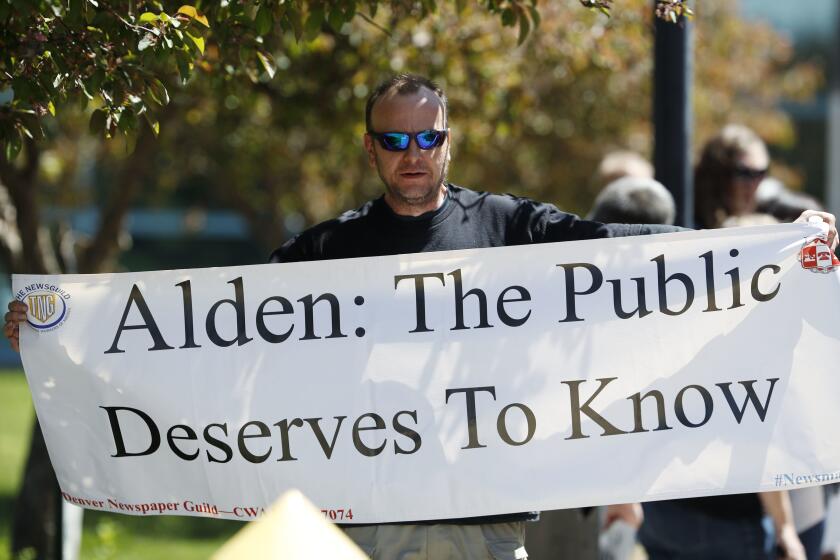Disney’s maestro
Milt Kahl was one of Walt Disney’s “Nine Old Men,” those legendary pioneers of animation. Kahl, who died in 1987, wasn’t as well known outside animation circles as his colleagues Frank Thomas, Ollie Johnston or Marc Davis. He never wrote a book about his career; his life wasn’t the subject of a documentary. He didn’t have a cuddly personality.
But among the veteran Disney animators, Kahl was considered the most accomplished and influential. Characters he brought to life included the animals in “Snow White and the Seven Dwarfs,” the tiger Shere Khan in “The Jungle Book,” Peter in “Peter Pan,” Tramp in “Lady and the Tramp” and the villainous Madame Medusa in his last film for Disney, “The Rescuers.”
The Academy of Motion Picture Arts and Sciences is celebrating the animator’s centennial Monday with a special evening, “Milt Kahl: The Animation Michelangelo,” at the Samuel Goldwyn Theater. Besides clips from his work, the program features a panel discussion hosted by animator Andreas Deja (Scar from “The Lion King”), Floyd Norman (who worked with Kahl on 1963’s “The Sword and the Stone”) and the directing team of Ron Clements and John Musker (“The Little Mermaid,” “Aladdin”).
Deja, Norman, Clements and Musker recently discussed Kahl’s genius.
Drawn to animation
Deja: “He knew anatomy. On ‘Bambi,’ they studied real deer, real rabbits and owls. He was the best at applying what he saw in the real thing and how that would work for an animated character, maintaining the realism but making it work so you have flexibility and the range of emotions and expressions. The way he put that down, nobody could ever touch it.”
Musker: “He had really crisp timing. He did one of the most complicated scenes I have ever seen -- Jiminy Cricket putting on his coat because he’s late and he’s running. It’s done like in a three-quarters perspective. He had a dancer’s feel for animation.”
Norman: “From the late ‘50s up until the 1960s and ‘70s, he became pretty much the de facto Disney designer. His drawing style pretty much influenced every feature that came out of Disney.”
Impressing Walt
Deja: “They had been animating the character of Pinocchio . . . . They were handling him in a wooden way even though he had come to life. Walt Disney didn’t like it and couldn’t verbalize what he didn’t like about.
“Milt, even at that young age, was very outspoken and said, ‘It looks terrible.’ The director said, ‘Why don’t you put your pencil where you mouth is?’ So he did a test scene with Pinocchio and he handled him not like a puppet, but a real kid who just looks like a wooden puppet. The drawings just came off the screen. Everyone was so impressed with his handling of that character, from that movie on, he became the drawing authority.”
Close encounters
of the Kahl kind
Deja: “He left the studio in 1976 and moved north to San Francisco where his children were. He was sort of my muse. Once a year I would go up there and spend an afternoon with him. Socially, he was wonderful. He gave me all the time I needed. I would show him drawings and he didn’t tear me apart. I think that was a bit different than when he was at the studio where when he saw things he didn’t like he would really chew people up.”
Norman: “He had this reputation of being terrifying, because he was a perfectionist and such an outspoken, bombastic person. To tell the truth, though, I had no problem at all because I had a secret for getting along with him -- I made him laugh. I could draw funny cartoons and Milt thought they were hilarious. If I could get a laugh out of him then that would keep him off my back.”
Clements: “I started at the studio about 1974. I was 20 when I started. Milt was very frightening. He intimidated a lot of people. He was like the Simon Cowell of animation. I was working on a Cruella De Vil animation test. I showed him my test and he was relatively kind. He gave me some advice and made a few drawings for me.”
For more information on the evening, go to www.oscars.org.
Elsewhere
* UCLA Film and Television Archive’s preservation festival continues Saturday evening at the Billy Wilder Theater with “Vitaphone Varieties 1927-1931” -- a program of early musical, dramatic and comedic shorts featuring vaudeville stars, musicians and even radio performers. Among the restored rarities are 1927’s “Ohman & Arden,” 1930’s “Crimes Square” with Pat O’Brien and torch singer Helen Morgan in 1931’s “The Gigolo Racket.” www.cinema.ucla.edu/calendar
* The Art Directors Society explores the theme “Designing for World War II” by screening John Ford’s 1945 epic “They Were Expendable,” on Sunday at the American Cinematheque’s Aero Theatre. Malcolm Brown supplied the art direction for the action classic that stars Robert Montgomery, John Wayne and Donna Reed. Production designer Tom Walsh will host a panel discussion after the movie. www.aerotheatre.com --
Classic Hollywood by Susan King is a new weekly feature on the lives, work and influence of legendary artists.
More to Read
The biggest entertainment stories
Get our big stories about Hollywood, film, television, music, arts, culture and more right in your inbox as soon as they publish.
You may occasionally receive promotional content from the Los Angeles Times.











